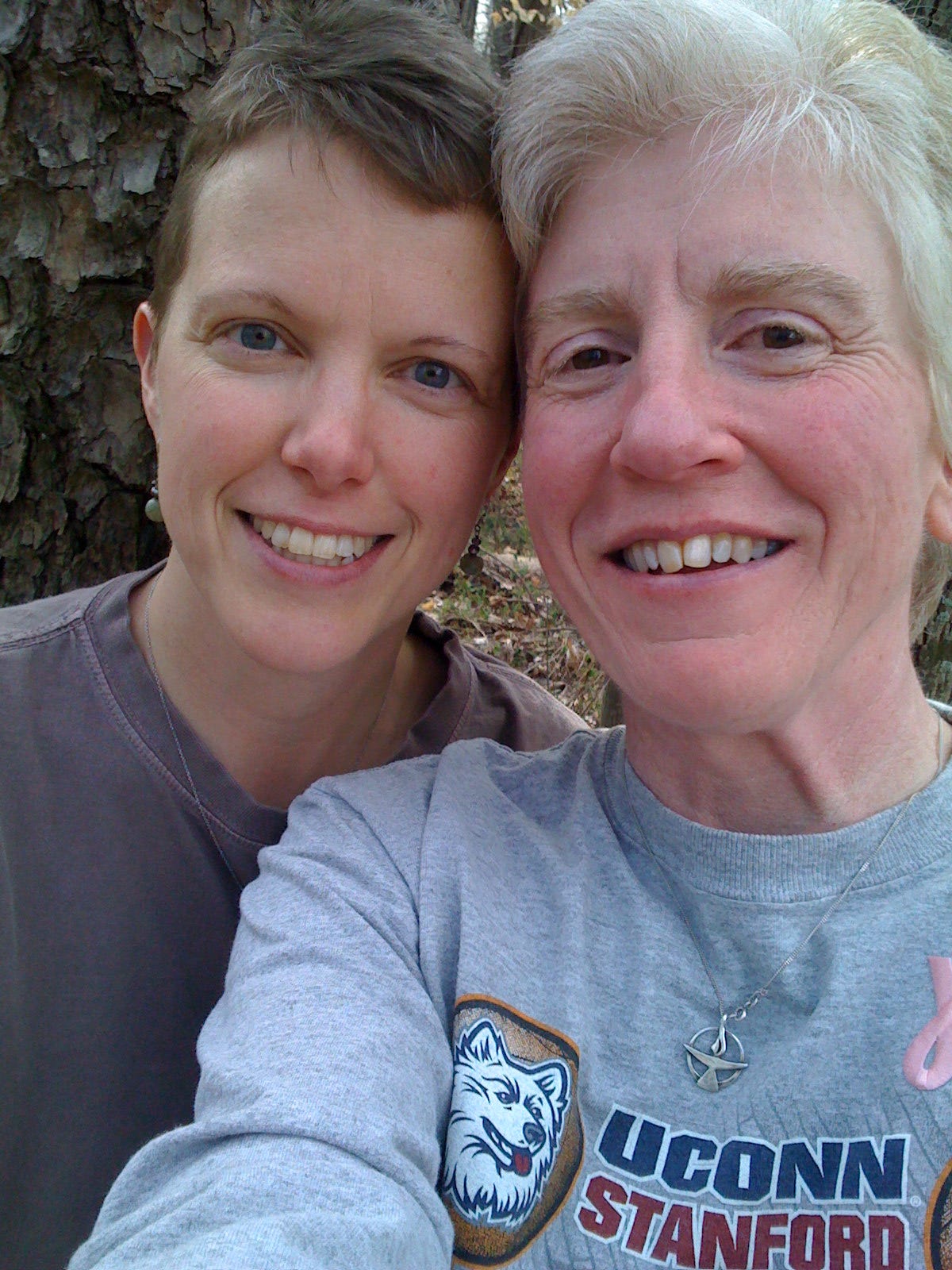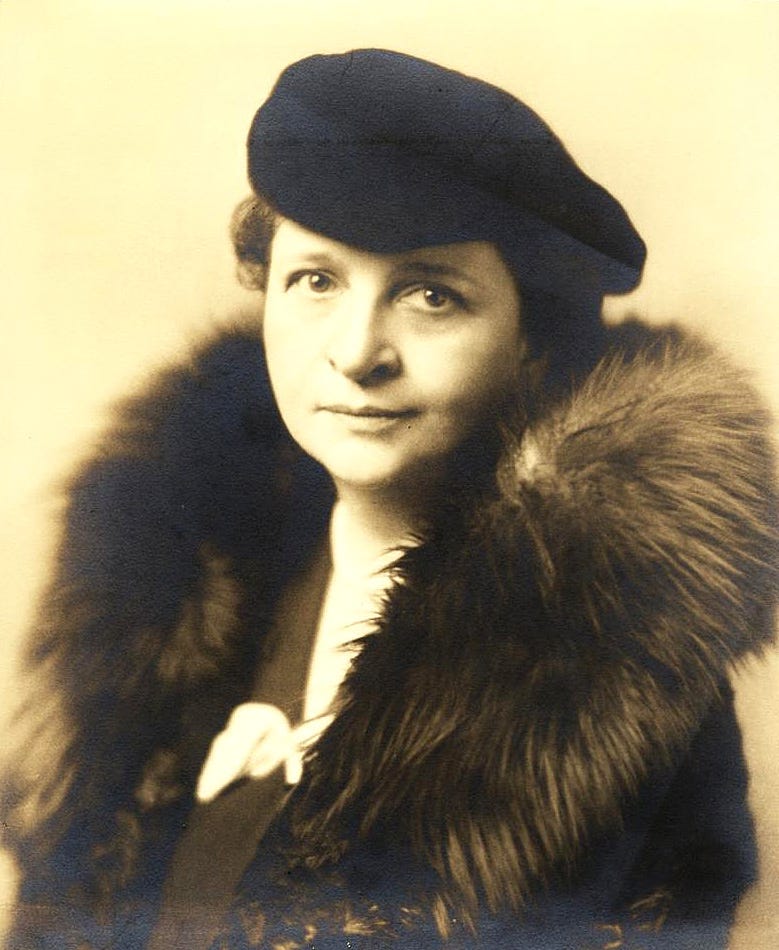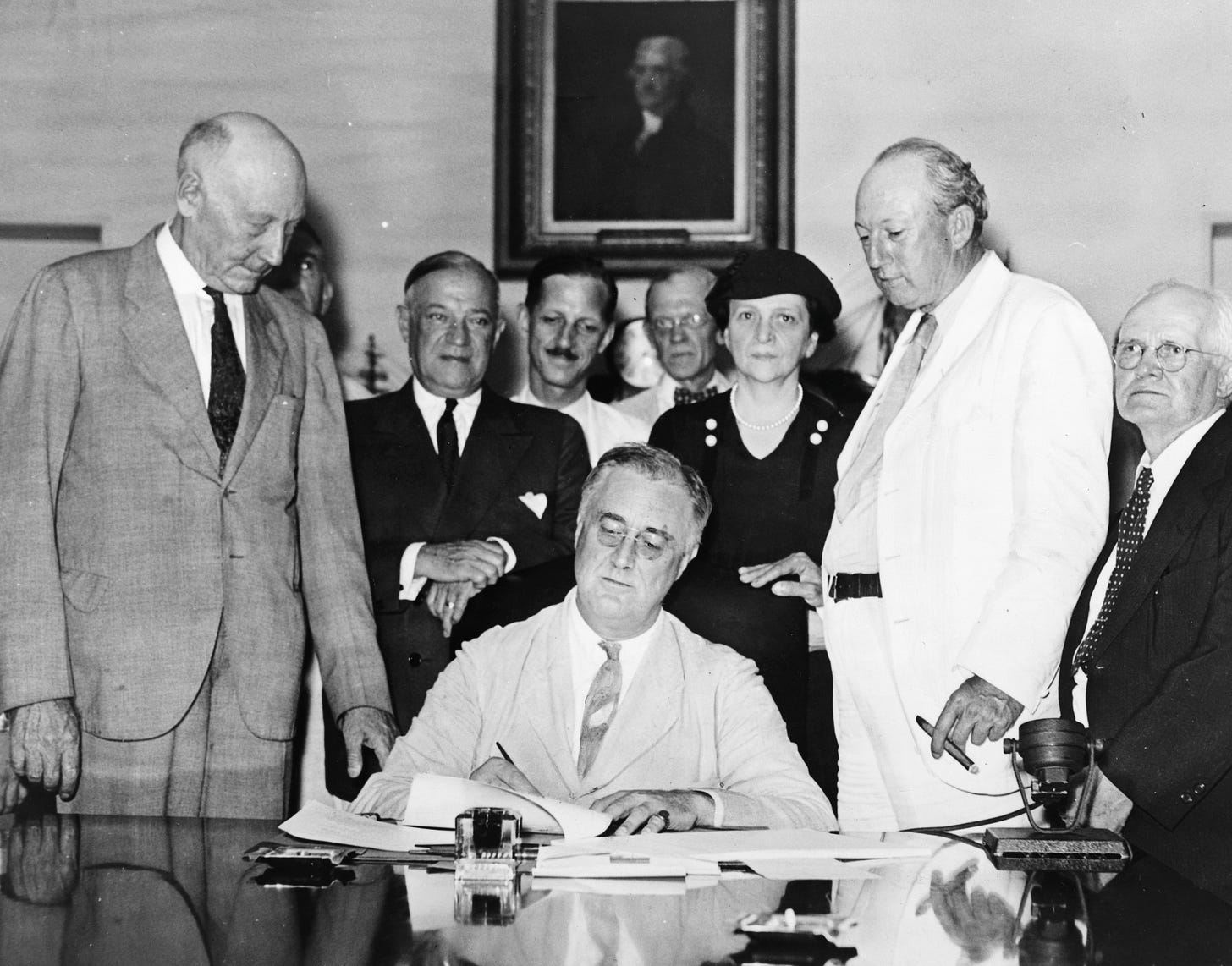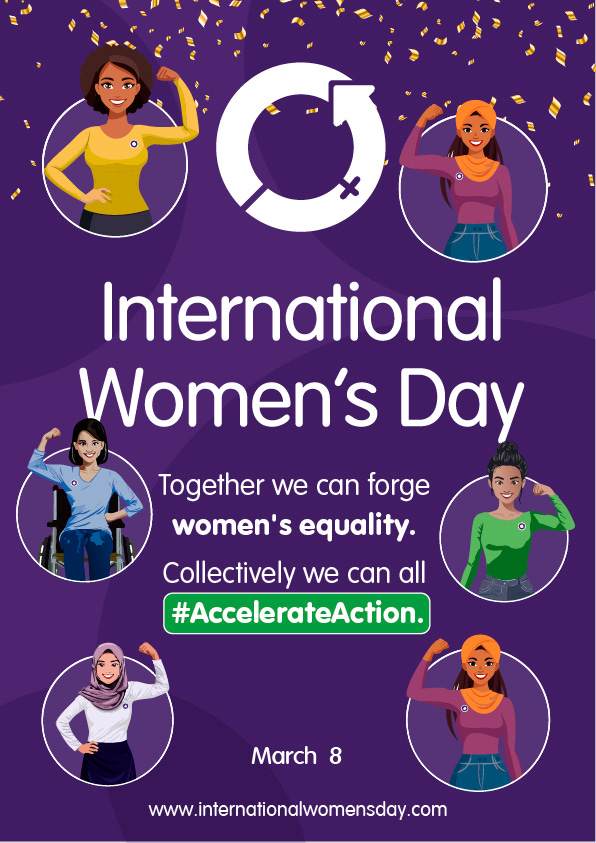What Basketball, Social Security, and International Women's Day Have In Common
Looking to women, past and present, for inspiration in these times
We arrived at the Greensboro Coliseum separately. I drove from my home in Charlotte, and Wendy from hers in Richmond. We barely knew each other. We’d met briefly on two occasions at different anti-racism conferences (if that’s not a match made in heaven, I don’t know what is). The first time we were both in other relationships and barely made an impression on each other. The second time—both single then and sharing a matchmaking friend—interest kindled.
But we’d never spent any time together—except, that is, on the phone. In the intervening weeks after that second encounter we spent a lot of time on the phone—sharing our life stories, talking about our interests, and revealing the characteristics we were looking for in a life partner.
Despite our almost fifteen-year age difference, it all seemed to click, except, that is, for her misdirected love of UConn Women’s Basketball. I was willing to overlook that, however, if, when we met in person, we “had chemistry.”
It didn’t take long to find out. As we sat in the stands at the 2009 ACC Tournament, her hand slipped into mine, fingers threading together in a slow but cautious dance. A gentle tickle brushed my palm, sending a ripple through me that had nothing to do with the roar of the coliseum. Then—maybe it was half-time—she turned and looked at me. When her eyes met mine, a spark flashed between us, untethered from the cheering around us—entirely our own. By the time the game ended, we couldn’t wait to get out of there. Not surprisingly, UConn won the conference championship and went on to win the NCAA title that year. Tina Charles and Maya Moore of Connecticut were unstoppable. As was our connection.
We hurried out of the coliseum, jumped into my car, and kissed. When an intoxicated man came too close to the car for comfort, we drove to a small nearby park and among burgeoning signs of spring, kissed again. By the time we parted that evening, we were both certain that we would see each other again, and again, and again.
Over the last sixteen years, we’ve watched a lot of women’s basketball together (and I’ve seen UConn win way too many times), but more importantly, we’ve forged a life. Wendy and I were the real winners that day. We celebrate March 8th, 2009, as our “first kiss” anniversary.
I love that we celebrate March 8th, International Women’s Day, as a key anniversary in our love story. Officially recognized for the first time by the United Nations in 1975, its roots extend much deeper, back to 1908, when 15,000 women, mostly garment workers, marched through New York City demanding shorter hours, better pay, and voting rights. Can you imagine 15,000 women marching years before they had electric refrigerators, washing machines, vacuum cleaners, toasters, or electric irons, and before mass-produced automobiles. How did they organize? With no internet, no television, not even telephones or radio, how did the word spread?
Labor unions played an important role, as did the Socialist Party of America. Three women, Clara Lemlich, Rose Schneiderman, and Leonora O’Reilly organized the 1908 march and later led even more significant actions related to workers’ rights and women’s suffrage.
Clara Lemlich was the primary organizer of the subsequent Uprising of the 20,000, also known as the New York Shirtwaist Strike of 1909. These marches helped spark ongoing labor activism and contributed to the growing movement for women’s suffrage and workplace protections.
At the time of the 1908 march, Frances Perkins was 28 years old, serving as the general secretary of the Philadelphia Research and Protective Association and studying at the Wharton School of the University of Pennsylvania. A year later, she moved to New York City for a fellowship at Columbia. It was then she started speaking at rallies advocating women’s suffrage. She probably didn’t participate in the Uprising—as it primarily involved Jewish women working in New York shirtwaist factories—but in 1911, Perkins witnessed firsthand the Triangle Shirtwaist Factory fire, a blaze that left 146 workers dead and radicalized Perkins activism.
Evocative of televised images from the World Trade Center attack three miles away and 90 years later, Perkins watched as women threw themselves out of eighth, ninth, and tenth floor windows to a certain death.
Some saw what they thought were bundles of fabric falling from the windows. They thought the factory owners were saving their best material. As the bundles continued to fall, the onlookers realized they were not bundles at all. They were people, hurling themselves to their death. “People had just begun to jump as we got there,” Perkins would later remember. “They had been holding on until that time, standing in the windowsills, being crowded by others behind them, the fire pressing closer and closer, the smoke closer and closer.”1
This event galvanized her commitment to what writer David Brooks described as her willingness to “take morally hazardous action if it would prevent another catastrophe like the one that befell the women at the Triangle factory. She was willing to compromise and work with corrupt officials if it would produce results. She pinioned herself to this cause for the rest of her life.”2
Why should we care about Frances Perkins? What relevance does her unfailing commitment to the poor and disadvantaged have to us in 2025? More than you might think. Without Frances Perkins, we wouldn’t be concerned about potential cuts to Social Security because it wouldn’t exist, at least as we know it today. As our nation’s first woman cabinet secretary, Perkins laid the foundation for Franklin Roosevelt’s New Deal.
When, in February, 1933, President-elect Roosevelt asked Frances Perkins to serve in his cabinet as Secretary of Labor, she outlined for him a set of policy priorities she would pursue: a 40-hour work week; a minimum wage; unemployment compensation; worker’s compensation; abolition of child labor; direct federal aid to the states for unemployment relief; Social Security; a revitalized federal employment service; and universal health insurance. She made it clear to Roosevelt that his agreement with these priorities was a condition of her joining his cabinet. Roosevelt said he endorsed them all, and Frances Perkins became the first woman in the nation to serve in a Presidential cabinet.3
A year later, Roosevelt appointed Perkins to head the Committee on Economic Security. It was then she forged the blueprint of legislation finally enacted as the Social Security Act. Roosevelt signed the bill into law on August 14, 1935.
Perkins believed Social Security was crucial to this country because it provided a vital safety net for Americans, particularly during economic downturns like the Great Depression. By offering a means to protect people from unemployment and poverty in old age through a system of regular contributions, it prevented widespread economic hardship and instability that could cripple the nation.
With its enactment, Perkins saw the government fulfill what she believed was its obligation to its citizens.
The people are what matter to government, and a government should aim to give all the people under its jurisdiction the best possible life.
—Frances Perkins
The best possible life for all people. I love to imagine what life would be like if government truly pursued that purpose. If the government focused its energy on the people, then:
Social Security would be protected at all costs.
Health insurance would be available to anyone who needed it.
No one in this country would go hungry or homeless.
Everyone who worked would earn a living wage and be confident that their work environment was safe.
And everyone who was qualified, regardless of race, color, national origin, religion, age, sex, sexual orientation, gender identity, or disability would truly have an equal shot at any job they wanted.
Frances Perkins would be proud of that America. And so would I.

According to data from the World Economic Forum, at the current rate of progress, it will take North America at least four generations to reach full gender parity. At the present time, the United States is not among the top ten countries in The Global Gender Gap Index 2024 Rankings (in fact, the U.S. ranks 43rd). That has to change!
Cuts to Social Security disproportionally impact women, primarily due to lower lifetime earnings, longer lifespans, and more time out of the workforce to raise children. In addition, women tend to rely more on Social Security than men, who are more likely to have other sources of retirement savings and pensions.
Because of inequities like this that exist all over the world, International Women’s Day chose Accelerate Action as its 2025 theme.
Focusing on the need to Accelerate Action emphasizes the importance of taking swift and decisive steps to achieve gender equality. It calls for increased momentum and urgency in addressing the systemic barriers and biases that women face, both in personal and professional spheres.
So, together, let's Accelerate Action to speed up the rate of progress worldwide.4
What steps will I take to accelerate action?
Rights we fought so hard for are being rolled back: abortion rights, LGBTQ rights, voting rights, immigration rights, workplace protections, freedom of speech, and citizenship rights (e.g., birthright citizenship) to name a few. To keep it in perspective, though, I like to look to history. In my first draft of this post, I wrote that what we’ve seen over the past two months is unprecedented. But is it? I researched this question, aware that my opinions can sometimes be too focused on my direct experience. An article on The Conversation, reminded me of a broader perspective:
For many Americans, [the President]'s head-spinning array of executive orders in the early days of his second term look like an unprecedented effort to roll back democracy and the rights and liberties of American citizens.
But it isn’t unprecedented.
...American history is not a steady march toward greater equality, democracy and individual rights. America’s commitment to these liberal values has competed with an alternative set of illiberal values that hold that full American citizenship should be limited by race, ethnicity, gender and class.5
Knowing this doesn’t make it easier, but it allows me to maintain hope and place my attention on the things I care most about. I don’t have to do everything but I’m determined to focus on one or two things where I can have some impact. For me, that is and has long been racism and other forms of oppression. Two of my most important values are human rights and pluralism (see more about my values in This I Believe.). That’s the work I’ll continue to do, accelerating action where I can and maintaining steady attention no matter what.
I don’t have to do everything but I’m determined to focus on one or two things where I can have some impact.
When Wendy and I left the Greensboro Coliseum after watching incredible women playing their hearts out in a sport they loved, we knew that what we had witnessed would not make those women rich. Women basketball players, even in the professional Women’s National Basketball Association (WNBA), make only a fraction of their male counterparts.
In the last few years, there’s been a surge in the popularity of women’s basketball. The Paris Olympics, Caitlin Clark’s and Angel Reese’s fame, and a steady growth in spectators has resulted in women beginning to get their due. However, with the attacks on diversity, equity, and inclusion, attacks that are really subterfuge for the promotion of misogyny, racism, and homophobia, transphobia, ableism, and every other injustice, will women’s sport become tainted? Will watching it be seen as bowing to the evil DEI? I don’t know, but it scares me. Not only because I love game, but because of what it means for young girls who dream of becoming like their NCAA and WNBA idols.
The current U.S. president claims to be all about protecting women athletes by banning transgender women from playing in women’s sports. At the same time, his U.S. Department of [Mis]Education announced that Title IX, the federal law passed in 1972 that requires colleges to provide equal per-player funding for men’s and women’s sports, does not apply to name, image, and likeness (NIL) payments paid directly to athletes from colleges and universities.
This misguided interpretation of Title IX will cut collegiate women athletes off from a huge source of funding set to come into play this year after a federal judge is expected to approve a $2.8 billion class-action settlement. After years of litigation, this settlement will finally allow athletes to receive name, image, and likeness payments from their schools. If the White House interpretation stands, male athletes, especially football and basketball players, will be rewarded, while women will be left out in the cold—again. So really, how committed are they to protecting women?
On International Women’s Day 2025, it is up to us to accelerate action—to take swift and decisive steps to achieve gender equality.
As you celebrate International Women’s Day and all of Women’s History Month, here are some suggestions for actions you might take:
Lift up the story of Frances Perkins and other unsung women. Make their stories known. Let them inspire us and hold us as we fight today’s injustices.
Call your senators and representatives and tell them about the importance of Social Security to the millions of Americans, especially women, who rely on it as their only source of income. The 5 Calls app is great help in doing that.
Join the Target Fast organized by Black faith leaders: A Lenten Fast from Corporations: A Call to Spiritual Resistance.
Visit www.womenshistorymonth.gov (while you still can—who knows if it will survive the purge).
Make sure your voice is heard about the White House’s current attempt to deny collegiate women athletes the same—not better or different—but the same benefits as men.
Write and share stories of women who have inspired you (for an example of how I chose to do that, visit Accidental Mentors: Inspirational Stories of Women Who Shaped My Life by Just Being Themselves).
Support the Smithsonian American Women’s History Museum.
Download the International Women’s Day 2025 Planning Toolkit.
Whatever you decide to do, Happy International Women’s Day! Wendy and I will be going out to celebrate—our first kiss, our love, and the women in our lives. I hope you find ways to celebrate too.
In hope and love,
Annette
Resources and References
The History of International Women’s Day
https://www.internationalwomensday.com/Activity/15586/The-history-of-IWD
Global Gender Gap Report 2024
https://www.weforum.org/publications/global-gender-gap-report-2024/digest/
Trump Has a Funny Way of Protecting Women’s Sports
https://www.theatlantic.com/ideas/archive/2025/03/trump-womens-sports-title-ix/681905/
Department of Education rescinds Title IX guidance that NIL payments must be proportionate
https://www.nytimes.com/athletic/6131665/2025/02/12/title-ix-nil-college-sports-department-of-education/
Footnotes
How the First Woman in the U.S. Cabinet Found Her Vocation, David Brooks, The Atlantic. https://www.theatlantic.com/politics/archive/2015/04/frances-perkins/390003/
Ibid.
The Woman Behind the New Deal. https://francesperkinscenter.org/learn/her-life/
International Women’s Day Theme. https://www.internationalwomensday.com/Theme
60 years of progress in expanding rights is being rolled back by Trump − a pattern that’s all too familiar in US history. https://theconversation.com/60-years-of-progress-in-expanding-rights-is-being-rolled-back-by-trump-a-pattern-thats-all-too-familiar-in-us-history-248526








I’ve always believed it will be women who save this country. Thanks for this essay on National Women’s Day and Happy “First Kiss” Anniversary. Fitting indeed!
Love this synergy of influential women! Inspiring indeed!